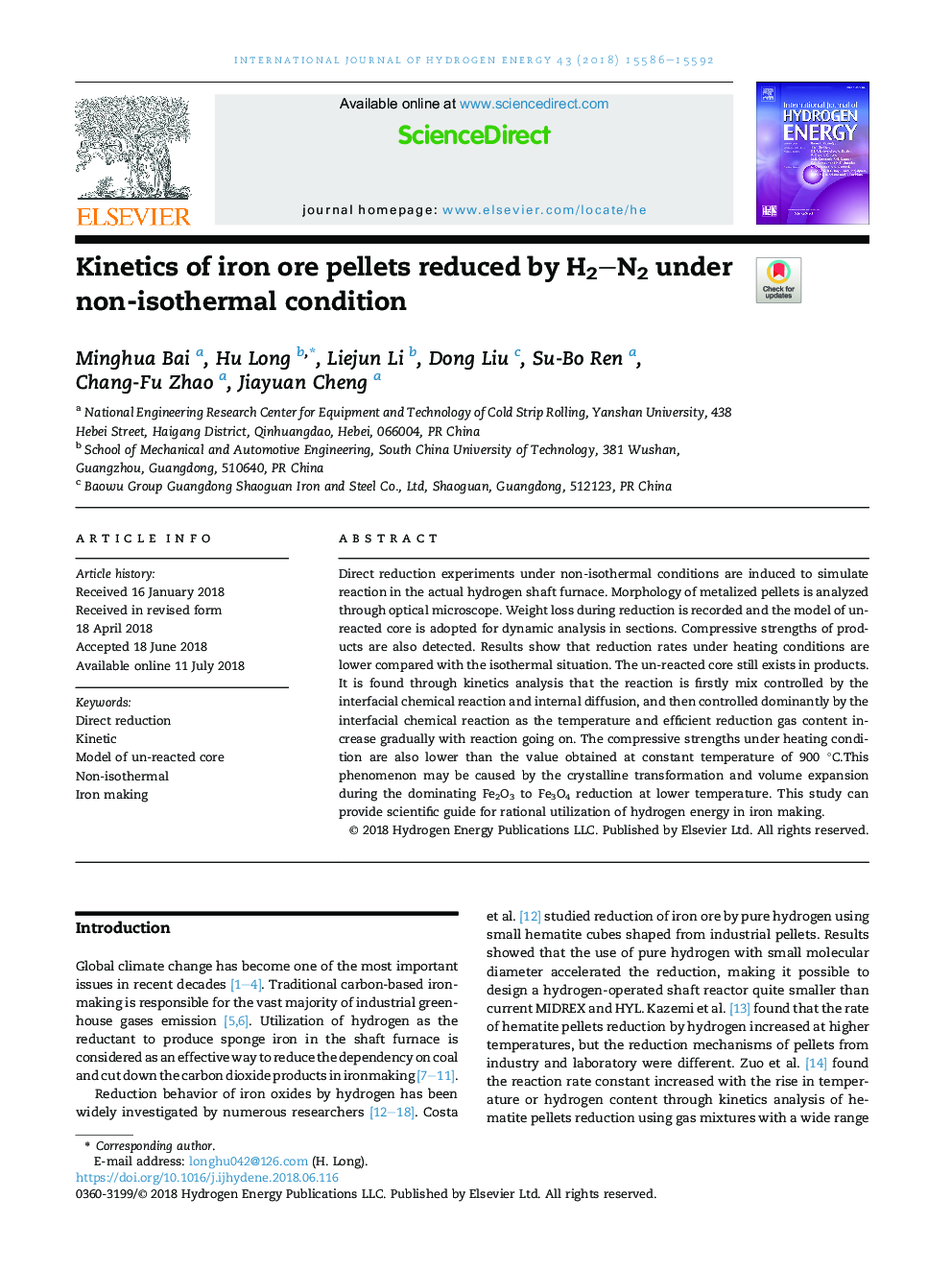| Article ID | Journal | Published Year | Pages | File Type |
|---|---|---|---|---|
| 7705393 | International Journal of Hydrogen Energy | 2018 | 7 Pages |
Abstract
Direct reduction experiments under non-isothermal conditions are induced to simulate reaction in the actual hydrogen shaft furnace. Morphology of metalized pellets is analyzed through optical microscope. Weight loss during reduction is recorded and the model of un-reacted core is adopted for dynamic analysis in sections. Compressive strengths of products are also detected. Results show that reduction rates under heating conditions are lower compared with the isothermal situation. The un-reacted core still exists in products. It is found through kinetics analysis that the reaction is firstly mix controlled by the interfacial chemical reaction and internal diffusion, and then controlled dominantly by the interfacial chemical reaction as the temperature and efficient reduction gas content increase gradually with reaction going on. The compressive strengths under heating condition are also lower than the value obtained at constant temperature of 900 °C.This phenomenon may be caused by the crystalline transformation and volume expansion during the dominating Fe2O3 to Fe3O4 reduction at lower temperature. This study can provide scientific guide for rational utilization of hydrogen energy in iron making.
Related Topics
Physical Sciences and Engineering
Chemistry
Electrochemistry
Authors
Minghua Bai, Hu Long, Liejun Li, Dong Liu, Su-Bo Ren, Chang-Fu Zhao, Jiayuan Cheng,
